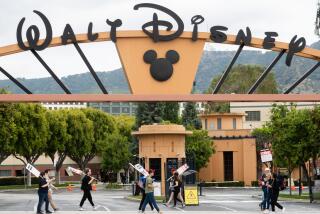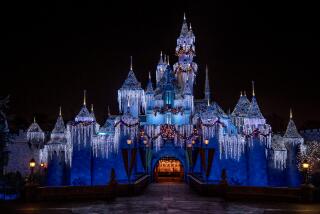SeaWorld attendance continues to drop

Falling attendance continues to dog SeaWorld, prompting the company to reinvest in marketing to rebuild its brand.
SeaWorld has been unable to reverse its falling attendance, reporting Tuesday that visitation dropped 4 percent during the first half of the year, with its San Diego and Orlando parks hit hardest.
While attendance actually showed a slight uptick during the second quarter, that was largely the result of the Easter holiday falling within that quarter. A more apt comparison, SeaWorld said, is to look at performance during the first six months of 2017 when 353,000 fewer people visited its parks.
SeaWorld Entertainment blamed the slumping attendance in San Diego on the reemergence of what it called its “public perception issues” after having cut back on marketing efforts to bolster its reputation. That was a mistake, CEO Joel Manby acknowledged in a morning earnings call with analysts, noting that SeaWorld had previously been investing more in marketing than its peers.
The Orlando-based company has been combating criticism surrounding the captivity of its orcas since the 2013 release of the documentary “Blackfish,” which sought to expose how SeaWorld treats its killer whales.
The announcement more than a year ago that it would be ending the breeding of its orcas and that it would phase out its theatrical Shamu shows apparently has not been enough to halt the attendance slide in San Diego.
In Orlando, reduced national advertising and competitive pressures from rival theme parks hurt park attendance, SeaWorld executives said.
SeaWorld’s stock price, already down 28 percent over the last six months, fell 6.25 percent to $12.76 at the market close Tuesday.
“While we are making progress in key areas of our plan, we are not satisfied with our results for the quarter,” said Manby. “This quarter provided us with an understanding of what is working and where we need to make adjustments. We are increasing our investment in national advertising to generate sufficient awareness of our brand attributes and strong new rides and attractions, developing a new national marketing campaign emphasizing our distinct experiences, and reinvesting in our reputation messaging to target perceptions in key markets, particularly California.”
The increased cost in marketing will be offset by additional cost-cutting moves on top of the $40 million in net savings it expects to achieve by the end of 2018, Manby added.
He was surprisingly candid about the failure of new attractions in San Diego to give the park a much needed lift in attendance.
Along with the new Orca Encounter that replaced the phased-out Shamu theatrical productions, SeaWorld San Diego introduced this summer its Ocean Explorer rides and aquarium, including a three-minute mini-submarine ride. The response has not been enthusiastic, Manby admitted.
The new additions, Manby said, have not delivered the return on investment that had been expected.
“Clearly we’re down. We invested and I’m disappointed in that,” he told analysts. “I said it in previous calls I’d be extremely disappointed if California didn’t go up this year, and I am extremely disappointed. We all are, and we’re working very diligently to address the issues and change that trajectory. And I do believe it is going to happen.”
Analysts had been bracing for a disappointing earnings report but the financials were even worse than what they had expected, said James Hardiman, a leisure analyst with Wedbush Securities. It didn’t help that the company’s chief financial officer resigned more than a week earlier, he noted.
SeaWorld has since appointed its former chief accounting officer, Marc Swanson, to fill the vacant post.
“I do think they’re looking at a sale,” Hardiman said. “I think they’re in big trouble if they’re not able to do something. We’re at the point where their debt is becoming pretty problematic. They are in danger of defaulting because when they got that debt they had to meet certain performance targets and based on the new guidance we’re getting, they are dangerously close to not meeting those targets.”
In a move to counteract the trends it was seeing, the company in June resurrected its “reputation messaging” campaign in Southern California and early last month embarked on a national advertising initiative, Manby reported.
“In a brand turnaround, we’ll continue to have to maintain a strong message about perception issues there that aren’t true and that we need to continue to fight, and that’s what we had hoped to back off from and we can’t now,” Manby told analysts.
Overall for the second quarter, a period that includes the start of the summer season through June 30, SeaWorld recorded a net loss of nearly $176 million, compared to a net profit of $17.8 million for the same period a year earlier. Part of that loss was the result of what is known as a “goodwill impairment charge” amounting to a write-down of $269.3 million, which reflects a reassessment of the true value of its Orlando park.
Quarterly revenues rose 1 percent to $373.8 million, accompanied by an attendance increase of 2.3 percent to 6.1 million visitors. Total visitation for the first six months was 8.9 million, down from nearly 9.3 million a year earlier.
The earnings report follows four consecutive quarters of slumping revenues and either flat or declining attendance across SeaWorld Entertainment’s 12 parks.
Given the latest quarterly results, the company has cut its annual expectation for adjusted earnings before interest, taxes, depreciation, and amortization to between $280 million and $310 million, down from its prior guidance of $330 million to $360 million.
Meanwhile, questions have arisen around the apparent hiring of the investment banking advisory firm, Evercore, which specializes in mergers and acquisitions, restructurings, public offerings and private placements. There had been some speculation that the hiring was a sign that SeaWorld was exploring a possible sale, but the issue was never broached during the earnings call.
Legoland’s parent company, Merlin Entertainments, has indicated in recent days that it might be interested in acquiring SeaWorld’s Busch Gardens parks. In an earnings call last week, Merlin Chief Financial Officer Anne-Francoise Nesmes noted that while “it takes two parties to do a deal,” she believes that Merlin “could certainly do a lot with (Busch Gardens), particularly around accommodation.”
The beleaguered company also is facing federal probes. In June, SeaWorld disclosed it was under investigation by the U.S. Department of Justice and U.S. Security and Exchange Commission. The investigations center around executives’ statements about the “Blackfish” documentary’s impact and trading in the company’s securities.
SeaWorld executives said they were buoyed by stronger attendance from locals coming from within a 300-mile radius, a trend apparent at the Orlando, Tampa and San Antonio parks. In San Diego, attendance is still down overall, although new rides and attractions, including the Orca Encounter, which debuted earlier this year, have helped boost visitation from the local San Diego market. What’s concerning, Manby said, is that SeaWorld San Diego is not getting the draw from the Los Angeles area that it should.
At the same time that the company has been trying to trim costs, it has been investing in new attractions, although they’re not considered on par with the sort of blockbuster additions being debuted by rivals Disney and Universal. Manby boasted that the company was able to deliver this year double the number of attractions that it did in 2016 for about the same investment.
In Orlando, SeaWorld ventured into virtual reality, retrofitting its Kraken roller coaster so that riders, outfitted with goggles, would feel as though they’re in an underwater landscape.
Next year, in a move to attract thrill-seeking teenagers, SeaWorld San Diego has previously announced it would unveil its fastest and tallest roller coaster, the Electric Eel. One unexpected surprise this summer, Manby noted, has been the enthusiastic embrace of Electric Ocean, a new nighttime show in San Diego that replaced the nightly fireworks.
Business
lori.weisberg@sduniontribune.com
(619) 293-2251
Twitter: @loriweisberg







